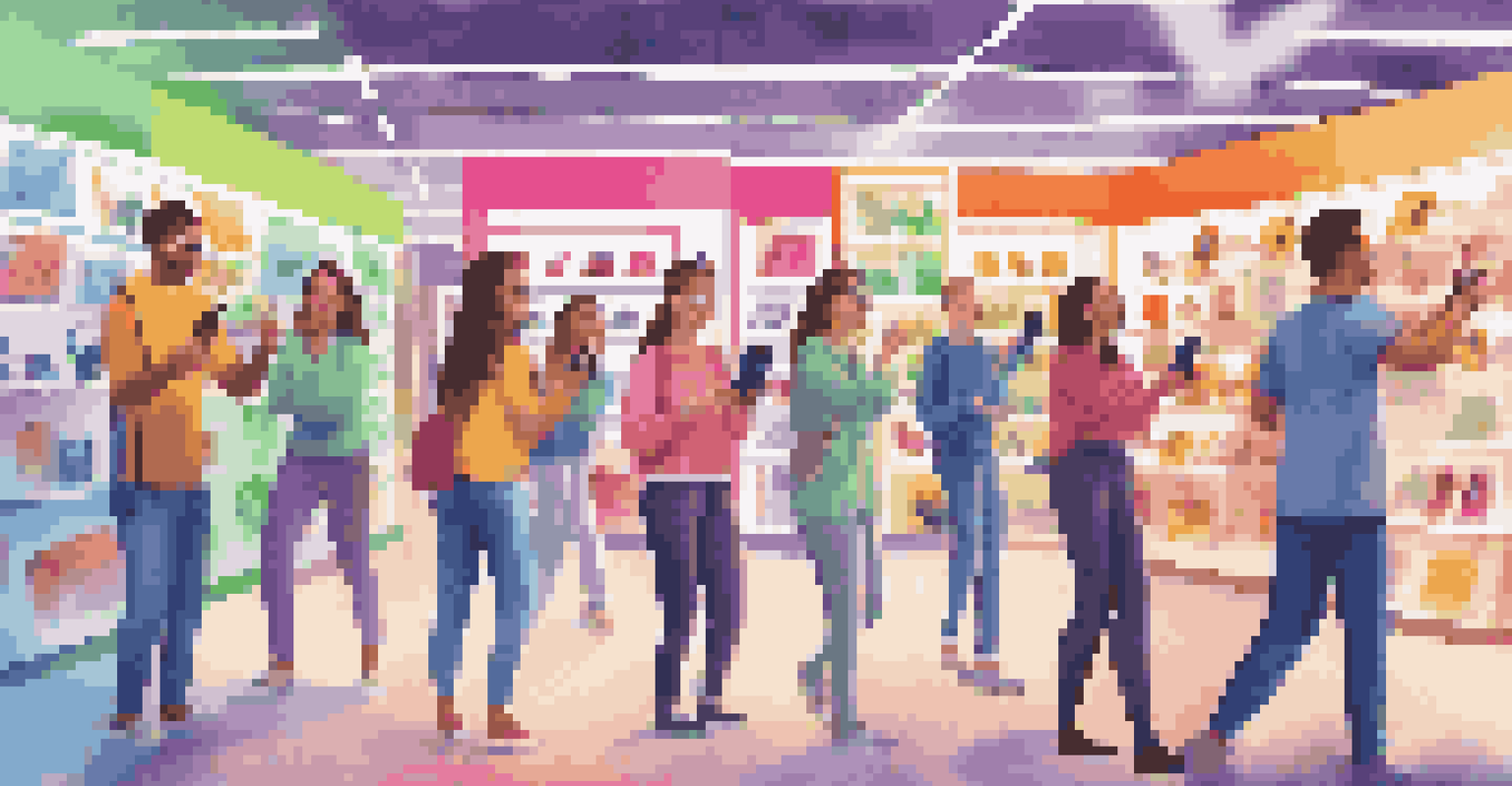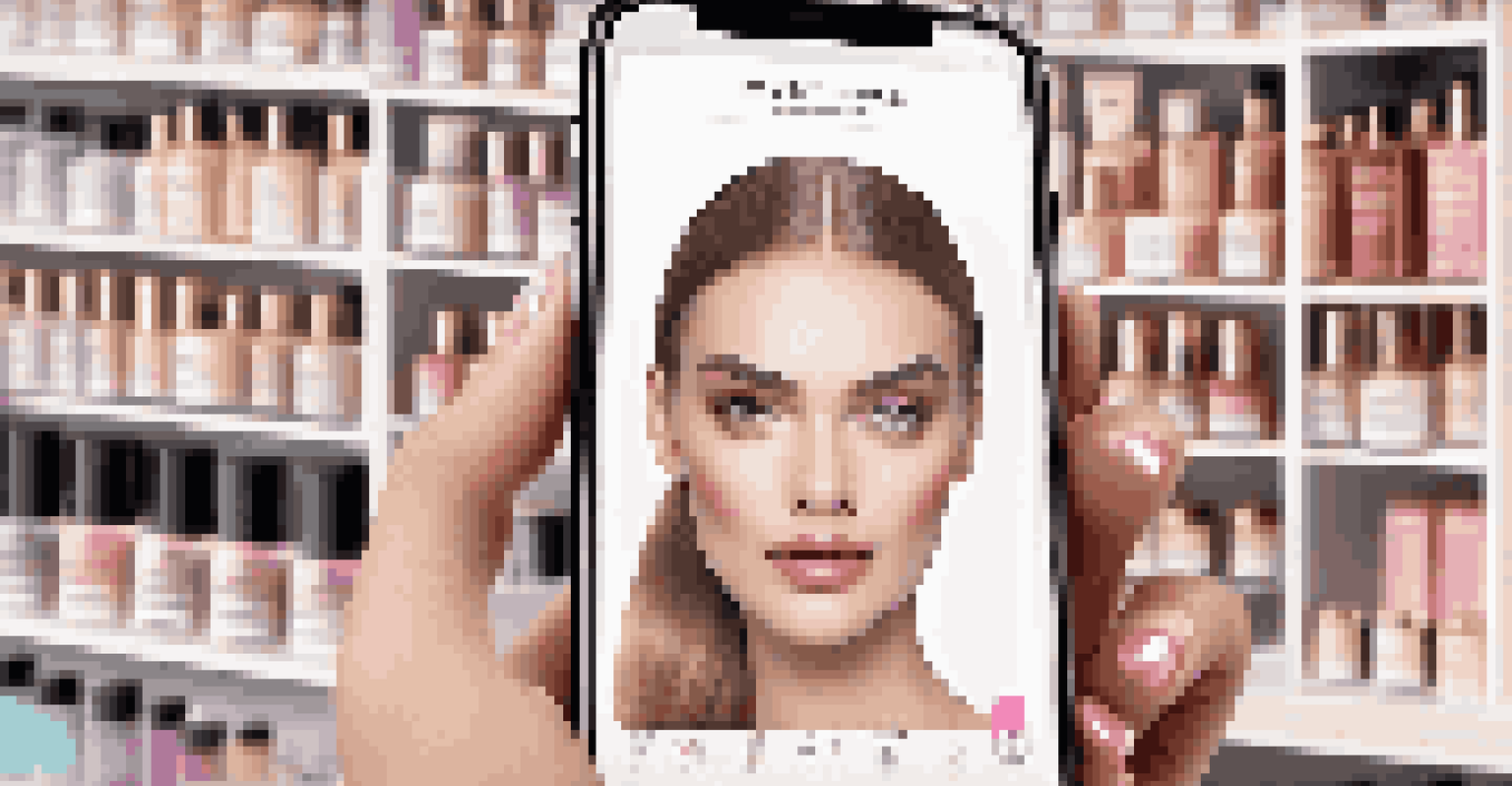Using AR to Create Unique Retail Experiences for Millennials

Understanding Millennials and Their Shopping Habits
Millennials are a unique generation, growing up in a world dominated by technology. This tech-savvy group values experiences over possessions, making them more likely to seek out engaging shopping opportunities. They tend to prefer brands that offer personalization and innovation, which is where augmented reality (AR) comes in.
The future of retail is not about the products we sell, but the experiences we create.
With AR, retailers can create immersive experiences that resonate with millennials, allowing them to interact with products in a way that's both entertaining and informative. For instance, instead of simply browsing for clothes online, they can virtually try them on, enhancing the shopping experience. This desire for connection and engagement drives millennials to seek out brands that understand their needs.
Incorporating AR into retail not only grabs attention but also establishes a bond with this audience. By providing unique experiences, brands can foster loyalty and encourage millennials to choose them over competitors who may not offer the same level of engagement.
The Role of AR in Enhancing Product Interaction
One of the significant advantages of AR is its ability to enhance product interaction. Traditional shopping allows for limited engagement, but AR breaks down those barriers by superimposing digital information onto the physical world. For example, a customer can point their phone at a piece of furniture and see how it would look in their home environment.

This technology allows millennials to visualize products in a way that feels real and immediate. They can explore features, colors, and sizes without ever stepping foot in a store. This not only saves time but also minimizes the uncertainty that often comes with online purchases.
AR Enhances Millennial Engagement
Augmented reality creates immersive shopping experiences that resonate with millennials, fostering brand loyalty.
By enabling this level of interaction, AR transforms the shopping process into a more interactive experience. As a result, millennials are more confident in their buying decisions, which ultimately leads to higher satisfaction and reduced return rates.
Creating Memorable Brand Experiences with AR
Memorable brand experiences are crucial in a competitive retail landscape, and AR offers a unique way to achieve this. When retailers integrate AR into their marketing strategies, they can create experiences that linger in the minds of millennials. For instance, an AR scavenger hunt in-store can turn a mundane shopping trip into an exciting adventure.
The key to a successful shopping experience is personalization and engagement.
These unique experiences not only attract attention but also encourage social sharing. When millennials encounter something fun and engaging, they're likely to share it on social media, further promoting the brand. This organic promotion can significantly enhance brand visibility and attract new customers.
Ultimately, the goal is to create a lasting impression that goes beyond the transaction. By using AR to craft engaging experiences, retailers can build a community of loyal customers who feel a connection to the brand.
AR as a Tool for Personalized Shopping Experiences
Personalization is key for millennials, and AR can play a pivotal role in tailoring shopping experiences. With AR, retailers can gather data on individual preferences and shopping behaviors, allowing them to offer targeted recommendations. Imagine walking into a store, and your phone suggests products based on your previous purchases and interests.
This level of personalization can make shopping feel more relevant and enjoyable. By presenting options that align with their tastes, retailers can enhance customer satisfaction and encourage repeat visits. Additionally, AR can facilitate personalized styling tips, making the shopping experience feel bespoke.
Personalization Boosts Satisfaction
AR allows retailers to tailor shopping experiences, making them more relevant and enjoyable for millennial consumers.
Incorporating AR in this way not only meets the expectations of millennials but also demonstrates a brand's commitment to understanding its customers. This thoughtful approach can lead to increased loyalty and advocacy among millennial shoppers.
Overcoming Challenges of Implementing AR in Retail
While the benefits of AR in retail are clear, there are challenges to its implementation. Many retailers may be hesitant to invest in AR technology, fearing the costs and complexity involved. However, it's essential to recognize that AR can be a powerful tool for enhancing customer experiences and driving sales.
To overcome these challenges, retailers can start small by testing AR features in select stores or through mobile apps. This gradual approach allows for learning and adjustment without a massive upfront investment. Moreover, collaborating with AR specialists can help streamline the integration process.
By addressing these challenges head-on, retailers can unlock the potential of AR technology. The investment may seem daunting initially, but the long-term rewards in terms of customer engagement and satisfaction can make it worthwhile.
Future Trends: The Evolution of AR in Retail
The future of AR in retail is promising, with continuous advancements in technology and consumer expectations. As AR becomes more accessible, we can expect to see even more innovative applications in the retail space. For instance, AR could soon allow customers to experience virtual reality (VR) environments that simulate real-life shopping experiences.
Moreover, as 5G technology becomes more widespread, the capabilities of AR will expand significantly. This faster connectivity will enable smoother experiences and more intricate applications, such as real-time inventory checks and enhanced product visualization. Retailers will need to stay ahead of these trends to meet the evolving demands of millennials.
Success Stories Showcase AR Impact
Successful implementations by brands like IKEA and Sephora demonstrate how AR can transform the retail experience and drive sales.
Ultimately, the future of retail will likely be shaped by the synergy between AR and the shopping experience. By embracing these trends, brands can ensure they remain relevant and appealing to the millennial consumer.
Case Studies: Successful AR Retail Implementations
To illustrate the effectiveness of AR in retail, we can look at several successful case studies. For example, IKEA's AR app allows customers to visualize how furniture will fit in their homes before making a purchase. This innovative approach has not only boosted customer confidence but also significantly enhanced the overall shopping experience.
Another notable example is Sephora, which offers a virtual makeup try-on feature through its app. This allows millennials to experiment with different looks before buying, making the shopping process more interactive and enjoyable. Such successful implementations highlight the potential of AR to transform the retail landscape.

These case studies serve as a reminder that when used effectively, AR can lead to increased customer satisfaction, loyalty, and ultimately, sales. As more retailers adopt similar strategies, we can expect to see a surge in AR-driven shopping experiences.